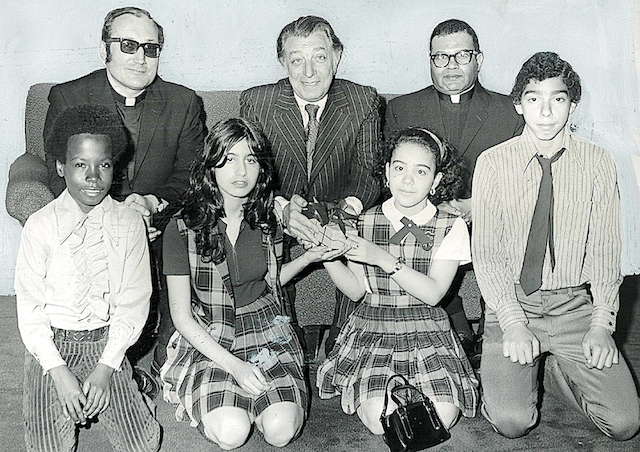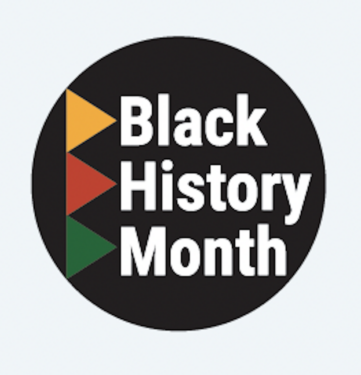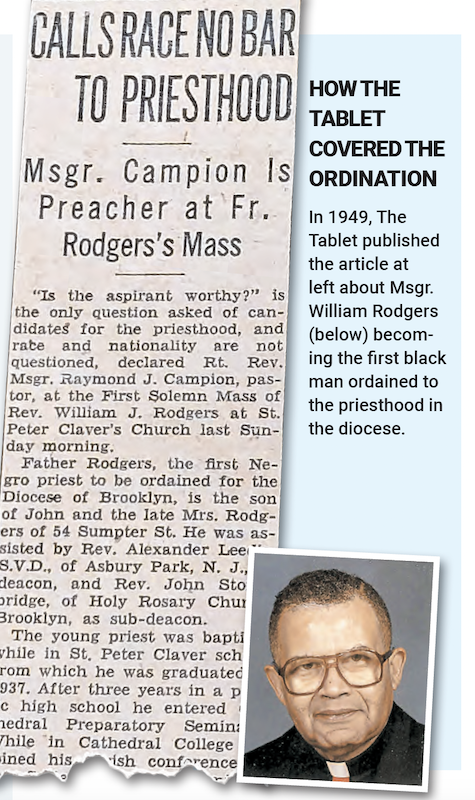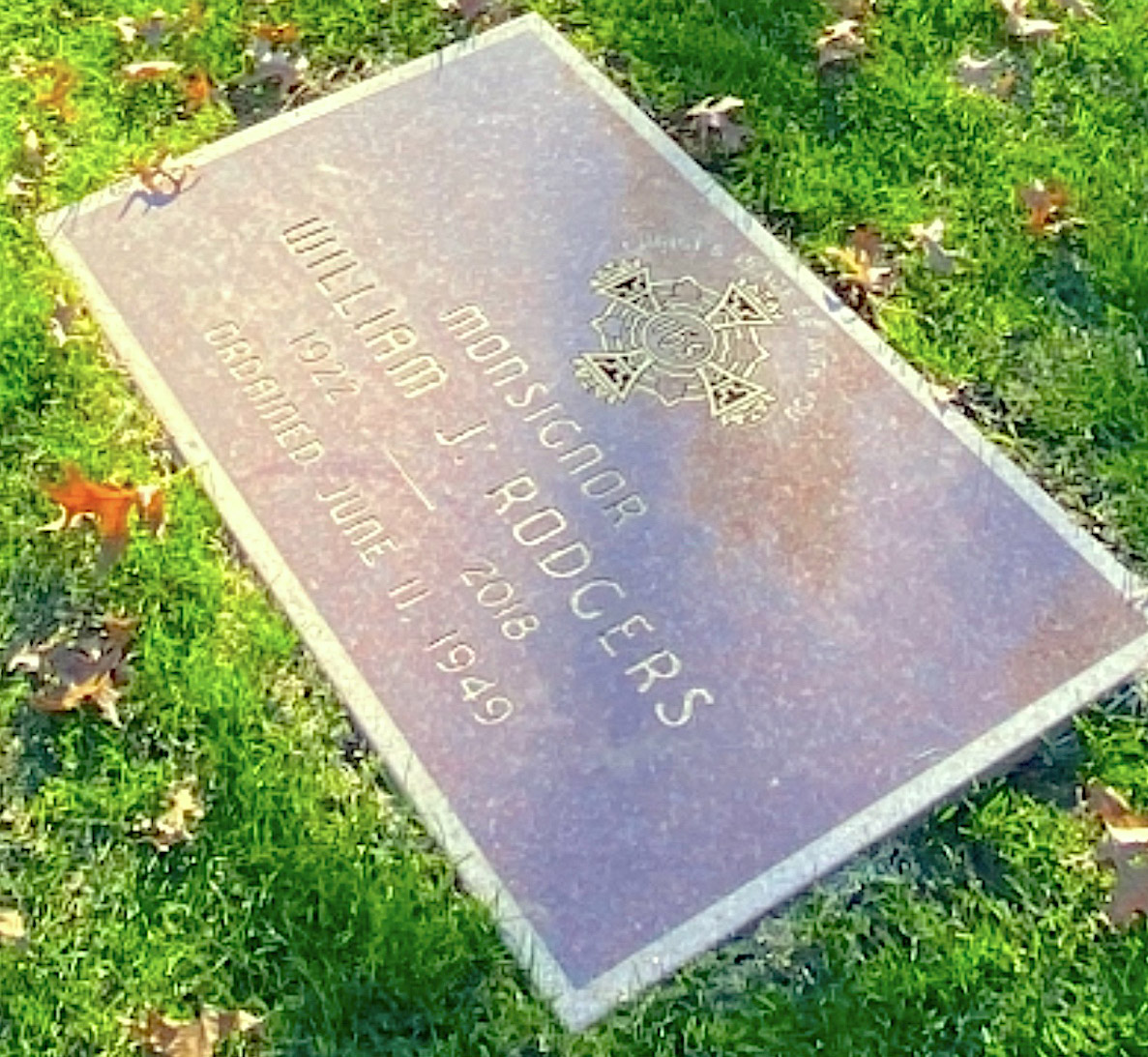
FORT GREENE — In his 96 years of life, Msgr. William Rodgers could boast of numerous noteworthy achievements.
He mastered multiple languages and earned a Doctor of Philosophy degree at St. John’s University. But even more importantly, he was known as the first black priest ordained in the Diocese of Brooklyn — a distinction that made him proud.
“We all were,” said Arturo Rivera, 67, one of his altar servers in the 1960s and 1970s at St. Lucy-St. Patrick Parish in Fort Greene. “But he didn’t make a big deal out of it. He was pretty humble when it came to that.”
Msgr. Rodgers, a priest for nearly 70 years, died Jan. 21, 2018, at his home in the Queen of Peace Residence, Queens Village, where he also served many years as chaplain.
 He was born May 24, 1922, in Charleston, South Carolina, to John and Essie Rodgers. The family moved to Brooklyn and the future monsignor was baptized at St. Peter Claver Church in Bedford-Stuyvesant.
He was born May 24, 1922, in Charleston, South Carolina, to John and Essie Rodgers. The family moved to Brooklyn and the future monsignor was baptized at St. Peter Claver Church in Bedford-Stuyvesant.
In college, Msgr. Rodgers became fluent in Latin, German, and Spanish. His mastery of languages enhanced his master’s and doctorate work in philosophy, according to information from the Office of Diocesan Archives.
Msgr. Rodgers was in formation at Cathedral College and Immaculate Conception Seminary at Huntington. Bishop Thomas Molloy ordained him on June 11, 1949.
The Tablet reported the new priest’s first Mass on page 12 of its June 18, 1949, edition. The homilist was Msgr. Raymond Campion, pastor of St. Peter Claver Parish.
Msgr. Campion said St. Paul’s listing of qualifications for the priesthood did not specify race.
He added that Jesus Christ’s cause has been “remarkably and excellently served” by black priests in the U.S., including Father Augustus Tolton of Chicago and Bishop James Augustine Healy of Portland, Maine.
A photo of the new priest with Bishop Molloy mentioned that, as a boy, Msgr. Rodgers sold The Tablet after Sunday Mass at St. Peter Claver Parish.
Before coming to St. Lucy-St. Patrick, Msgr. Rodgers was a parochial vicar for both the parish where he was baptized and St. Benedict the Moor in Jamaica. Both are two historically black parishes in the diocese.
His mastery of Spanish enhanced his pastoral work with Hispanic parishioners at St. Lucy-St. Patrick, according to the archives.
The civil rights movement from the late 1940s to the late 1960s coincided with the first two decades of Msgr. Rodgers’ priestly career.
This turbulent yet transformative time saw the leadership of the Rev. Martin Luther King on the national stage, as well as the creation of the Office of Black Ministry and the ordination of more black priests in the diocese.
Rivera said Msgr. Rodgers would speak of the importance of the civil rights movement, but he was quick to take steps to ensure students also learned about the faith.

Rivera, who attended school at St. Lucy-St. Patrick, said he and other former students especially remember Msgr. Rodgers for how he influenced their lives.
“All the guys who went to school with me — we’re all still in contact,” Rivera said, adding that they all share fond memories of the priest.
“I am the man I am because of him,” Rivera said. “I did Communion and confirmation with him. I got scolded by him. And I got married because of him.”
Rivera explained that he and his future wife initially delayed getting married. But it was Msgr. Rodgers — he kept contact with his former altar boy — who pressed him to tie the knot.
“He would always tell me, ‘¿Cuando? ¿Cuando? ¿Cuando?’” Rivera said. “Of course, that means, ‘When? When? When am I going to get married?’” Finally, the couple did.
Schoolgirls also comprised Msgr. Rodgers’ flock, said Betsy Rodriguez, currently office manager and director of religious education at St. Anthony-St. Alphonsus Parish in Greenpoint.
Rodriguez did not attend the school, but she was enrolled in religious education and received first holy Communion at St. Lucy-St. Patrick. She recalls that Msgr. Rodgers was key in teaching etiquette for Mass.
“He taught me how to kneel because I sat on my heels,” Rodriguez recalled with a laugh. “I remember him letting me know that I needed to straighten my back! He was a sweetheart, but he wanted to make sure that we learned everything correctly.”
The Tablet covered Msgr. Rodgers’ funeral, reporting how fellow priests recalled his groundbreaking role as the first black priest ordained in the diocese. Other descriptions attached to him included “extremely intelligent” but also “humble” and “low-key.”
Moreover, he was remembered as a man who loved God, the Church, and its people. Members of St. Peter Claver affixed his name on their parish hall in 2020.
Msgr. Rodgers’ resting place is St. John’s Cemetery, Middle Village, at the shrine for diocesan priests. His and the graves of fellow priests are arrayed around the shrine’s centerpiece — a statue of St. John Vianney, which bears the inscription, “Thou Art a Priest Forever.”


Another well researched article by Bill Miller about a pioneer Priest. This article was in the February 3rd issue or the Tablet. Coincidentally, my paternal grandparents and a high school classmate are buried at St. John’s Cemetery in Queens.